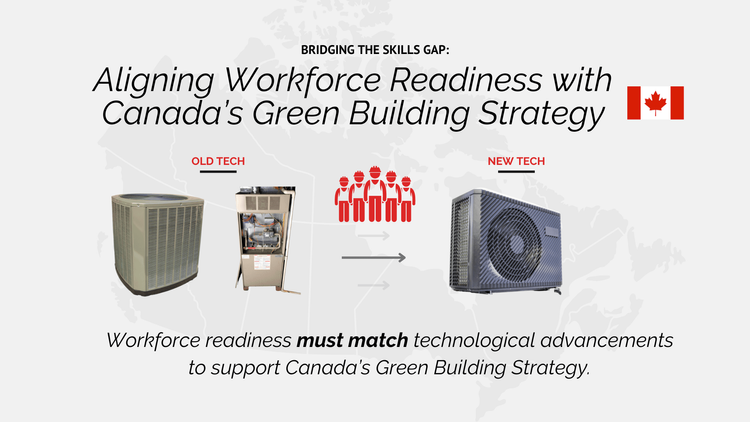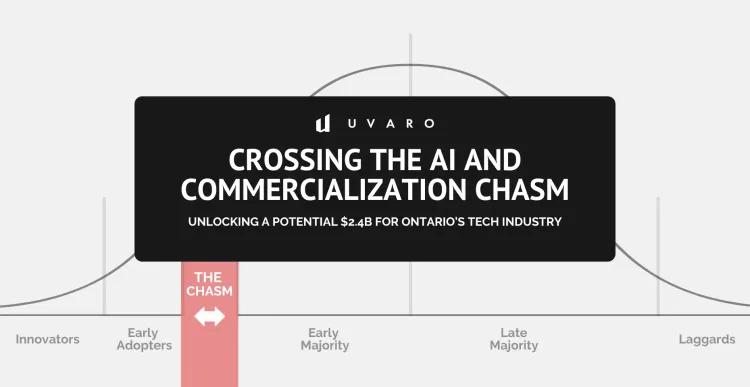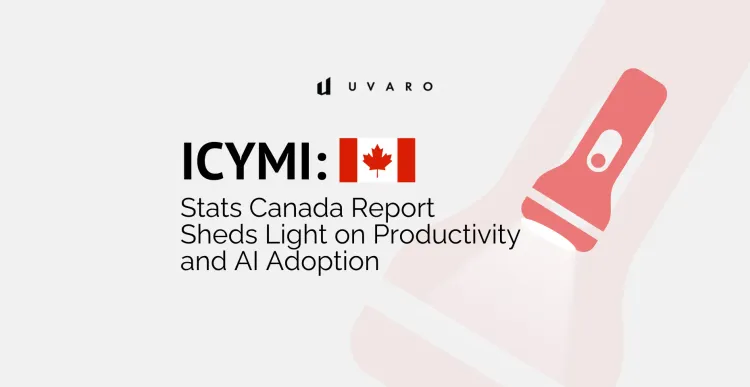Bridging the Skills Gap: Enhancing Workforce Readiness for Canada’s Green Building Strategy
Discover how Uvaro’s Long-Tail Program Design can help close the skills gap across industries to support Canada’s growth and productivity!

Jul 31, 2024
Recently, the Government of Canada unveiled its new Canada Green Buildings Strategy (CGBS), outlining steps to improve the energy efficiency of homes and buildings across the country. The CGBS will be supported by various federal programs to fund retrofits to homes and buildings that will further reduce emissions and energy consumption for Canadians.
Transitioning to high-efficiency, modern heating technologies, such as heat pumps, will be a central element of the implementation of the CGBS.
The Workforce Challenge
Technological advancements must be matched by workforce readiness. Without a workforce skilled in installing and maintaining these advanced systems, even the most innovative technologies cannot achieve their full potential.
Currently, Canada’s HVAC workforce is predominantly trained on legacy technology for heating and cooling that 93% of the country uses to heat and cool their homes. Only a fraction of technicians have the skills required to transition to newer, more efficient technologies like heat pumps. This skills gap is a critical issue that we must address to facilitate the widespread adoption of these advanced systems.
The Solution: Upskilling the HVAC Workforce
How do we get the workforce to a place where we can significantly increase the number of HVAC technicians with this training? From Uvaro’s perspective, upskilling isn’t just about ‘going back to school’. There is a better approach for upskilling portions of the existing workforce.
This is where our unique approach called ‘Long-Tail’ Program Design comes into play, specifically designed to address such skills gaps.
Uvaro’s Long-Tail Program Design
Uvaro’s ‘Long-Tail’ modularized approach to workforce development has enabled us to support a wide range of programs, from cleantech and cybersecurity to tech sales and beyond. This type of program comes with an extended support window—usually 12+ months in duration—and provides additional career support beyond the initial training or education period for better outcomes. 
Moreover, partnerships with industry bodies and educational institutions are crucial to ensure programs meet industry standards and criteria, such as the 'Red Seal'. Here is an example of what a program to support HVAC workforce development using this approach to overcome this skills gap might look like:
- Education: Specialized Heat Pump Training, Refrigerant Handling Certification, led by outside partners and industry bodies.
- Experience: Work placements to apply skills learned in ‘Education’ while increasing program retention, led by Uvaro and supported by industry partners.
- Advancement: Job support to connect unemployed or in-need participants with organizations hiring for skills they now have, led by Uvaro.
- Advice: Career and interview coaching to ensure job outcomes and ensure ROI on funded programs with minimal attrition, led by Uvaro.
- Community: Continuous support through peer and mentorship programs, creating an ecosystem where knowledge and skills are shared and enhanced, supported by both Uvaro and industry partners.

Upskilling for the Future
While Uvaro exclusively focuses on online roles rather than in-person trades training, heat pumps serve as an example of new technology that necessitates specialized training. This exercise demonstrates how our Long-Tail Program Design can be adapted to various industries, showcasing its potential to address emerging skills gaps across different sectors.
Similarly, new technologies impacting online knowledge workers, like generative AI, require mass retraining to stay competitive. Our Long-Tail Program model effectively bridges these gaps, supporting workforce development initiatives for our partners and career development initiatives for our members. A skilled workforce is essential for the successful adoption and maintenance of new technologies, ensuring that innovations achieve their full potential.
We believe the future of Canadian workforce development lies in Long-Tail Program Design. By improving skills across various industries, we can increase productivity and make the most of new technologies. Learn more about Uvaro’s approach today.





